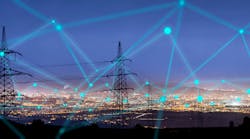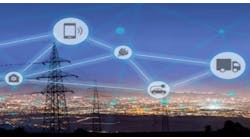January’s historic California storms illustrate the need for improved grid resilience
By Matt Smith, Senior Director of Grid Management at Itron
In January, extreme storms tested California’s energy grid in unprecedented ways. Aside from the physical damage caused by flooding, upwards of 400,000 homes and businesses lost power, exposing grid vulnerabilities across the state. The storms in California are just one of the many examples of the unprecedented consequences of climate destruction.
As the frequency and severity of these events continues to increase, improving grid resilience has become paramount in the utility industry. While we cannot prevent extreme weather, with proper mitigation tactics and distribution automation (DA), we can significantly improve recovery time and make decisions informed by real-time, intelligent information.
Leveraging distribution automation for disaster recovery
Powered by outdated infrastructure, the grid is struggling to meet today’s energy demands. As climate disruption places more stress on the aging grid, DA technology is playing a key role in grid management and optimization. DA uses multi-application communications technology to increase grid reliability by improving fault identification, real-time decision-making, automated outage resolution and reduced truck rolls. In the context of the recent California storms, this technology enables utilities to manage the energy grid in sections, limiting the number of residences impacted by an outage.
Not only do these intelligent capabilities help utilities quickly retrieve restoration alerts to determine outage impact in real-time, but they also contribute to significant reductions in operational expenditure.
To put it simply, when disaster strikes, the best avenue to a speedy recovery is through distributed intelligence. In harnessing insights from real-time data, utilities can avoid spending precious time and resources on detecting the source of an outage. With intelligent technology immediately identifying the root of the issue, recovery crews can get right to work to get the grid back up and running. Utilities can also leverage this technology to segment the grid and automate energy-distribution decisions for optimal recovery speed. This efficiency level is critical, especially amid natural disasters and emergencies when energy resources are necessary to keep the community safe.
In addition to these breakthrough technology tools, there are several mitigation approaches that can alleviate the stress on the grid throughout a natural disaster. Utilities can better prepare by installing underground wires, increasing the frequency of vegetation management, pre-positioning equipment ahead of a storm and calling in outside restoration crews for backup. While effective, these tactics can be extremely costly and are less useful once the damage has already been done.
Creating a reliable grid
The key to reliable grid management is to invest in infrastructure with DA and distributed-intelligence capabilities. Today’s energy grid is outdated and requires modernization to keep up with the unpredictable impact of climate destruction. Fortunately, the Infrastructure Investment & Jobs Act is equipping utilities with the funding they need to begin this transition. With smart technology, utilities are not only improving their disaster-recovery timelines, but are also seeing significant operational-expenditure savings.



